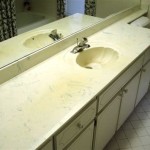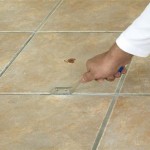Changing a Washer on a Bathroom Sink Tap
A dripping bathroom tap can be a persistent annoyance and a source of wasted water. Often, the culprit behind this persistent drip is a worn-out washer. Fortunately, replacing a tap washer is a relatively simple plumbing task that most homeowners can tackle with a few basic tools. This article provides a step-by-step guide to changing a washer on a bathroom sink tap, empowering readers to address this common household issue.
Before beginning any plumbing work, it is crucial to shut off the water supply. Locate the isolation valves under the sink. These are usually small handles connected to the pipes leading to the tap. Turn both the hot and cold valves clockwise to shut off the water flow. Once the valves are closed, turn on the tap to release any remaining water pressure in the lines. This step is essential to prevent unexpected sprays of water during the repair process.
After ensuring the water is off, the next step involves removing the tap handle. Different tap designs require slightly different approaches. Many modern taps have a small cap on the top or side of the handle, often concealing a screw. Use a small flat-head screwdriver to carefully pry off this cap. Once removed, the handle retaining screw will be exposed. Use the appropriate screwdriver – usually a Phillips head – to unscrew and remove the screw. With the screw removed, the handle should lift off the tap body.
Some older tap handles may not have a visible screw. These typically have a grub screw located underneath the handle. Use an Allen key (hex key) to loosen and remove the grub screw. Once the grub screw is removed, the handle can be pulled off the tap body. In some cases, the handle may be stiff due to mineral deposits. Gentle persuasion with a pair of pliers, protected by a cloth to prevent scratching, may be necessary. However, excessive force should be avoided to prevent damage to the tap.
Once the handle is removed, the internal workings of the tap will be exposed. This typically includes a nut or cover that holds the valve assembly in place. The exact design can vary depending on the tap model, but the principle remains the same. Use an adjustable wrench to carefully loosen and remove this nut. It's crucial to avoid scratching the tap finish, so consider placing a cloth over the nut before applying the wrench. With the nut removed, the valve assembly can be lifted out.
At the bottom of the valve assembly, usually secured by a small screw, is the washer. This small, typically rubber or plastic disc, is the component responsible for creating a watertight seal. Use a small flat-head screwdriver to carefully pry the old washer out of its housing. Examine the old washer for wear and tear. A hardened, cracked, or distorted washer is a clear indication of the source of the leak.
Take the old washer to a hardware store to ensure you purchase the correct replacement. Washers come in various sizes and materials, and using the wrong one can lead to further leaks or even damage the tap. With the new washer in hand, place it into the housing ensuring it sits correctly in the recess. Secure it with the small screw. It's important not to overtighten this screw, as this can damage the washer or the valve assembly.
Reassembling the tap involves reversing the disassembly process. Insert the valve assembly back into the tap body and tighten the retaining nut using the adjustable wrench. Again, protect the tap finish with a cloth. Replace the tap handle and secure it with the retaining screw or grub screw. Replace the decorative cap, if applicable.
Once the tap is reassembled, slowly turn the isolation valves back on, first the cold, then the hot. Observe carefully for any leaks. If the tap still drips, double-check that the washer is correctly seated and the retaining nut is tightened appropriately. If the problem persists, it may indicate a more complex issue requiring the assistance of a qualified plumber.
Regular maintenance can prevent future leaks and extend the life of your taps. Periodically checking for signs of wear and tear, such as dripping or reduced water pressure, can allow for proactive repairs before problems escalate. Understanding the basic workings of your taps and performing simple maintenance tasks like changing a washer can save water, prevent costly repairs, and contribute to a more efficient and sustainable home.
While this guide provides general instructions, the specific steps may vary slightly depending on the make and model of your tap. Consulting the manufacturer's instructions or seeking advice from a qualified plumber is always recommended when undertaking any plumbing repair. With patience and attention to detail, changing a tap washer is a manageable task that can restore the smooth, drip-free functionality of your bathroom sink.

How To Replace A Tap Washer

How To Change A Washer On Mixer Tap Bathroom Ideas

Leaking Tap Learn How To Change A Washer

Learn The 7 Diy Steps To Replace Your Tap Washer Blog

How To Change A Washer On Mixer Tap Living By Homeserve

How To Change A Tap Washer Warehouse

How To Change A Tap Washer Beginner S Guide 2024

How To Change A Washer On Mixer Tap Taps And Toilets

How To Change A Tap Washer

How To Change A Washer On Mixer Tap Bathroom Ideas
Related Posts







